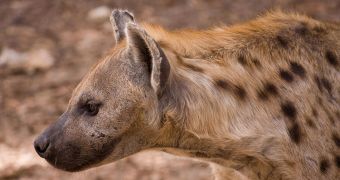A group of researchers has recently managed to crack the “code” hyenas use when they laugh and giggle. According to the investigators, these behaviors contain a large amount of information about the animals' social status, age, mood and desires, all of them transmitted in the most basic forms possible. One of the first things they noticed was the fact that the laughter these creatures employ is a clear indicator of a particular hyena's age. The higher the pitch in their “voice,” the older they are, the scientists say, quoted by the BBC News.
The recent study was conducted by American researchers at the University of California in Berkeley (UCB), led by Professor Frederic Theunissen, who worked closely with colleagues from France, based at the Universite Jean Monnet, in St Etienne. The French team was led by Professor Nicolas Mathevon. The animals that were used for the investigation, some 26 captive spotted hyenas, were held at a Berkeley field station, where conditions were proper for this type of study. Another important thing the team found was that hyenas tended to introduce subtle variations in the frequency of the notes they are using when communicating with each other.
For example, some of these variations have been linked with an animal's ability to transmit a vast amount of information about its own social status rank to other individuals nearby. The joint group published the results of its investigation in the latest issue of the respected scientific journal BMC Ecology. “The hyena's laugh gives receivers cues to assess the social rank of the emitting individual. This may allow hyenas to establish feeding rights and organize their food-gathering activities,” says Theunissen. Spotted hyenas, known scientifically as Crocuta crocuta, go out mainly at night, and form relatively large groups.
The size of their group varies widely, between 10 and 90 individuals regularly. Most of the time, the clan hunts in cooperation, but this can generate intense fighting over the freshly-killed carcass. For this particular species, females hold the dominant role within the group, over-ranking males regardless of what age they have. The giggles and laughter also appear to have a role in letting new, male members of a clan know where they stand. When they are first included, they are at the bottom of the group hierarchy, and so it might be useful for them to listen to other members communicate and learn their place.

 14 DAY TRIAL //
14 DAY TRIAL //